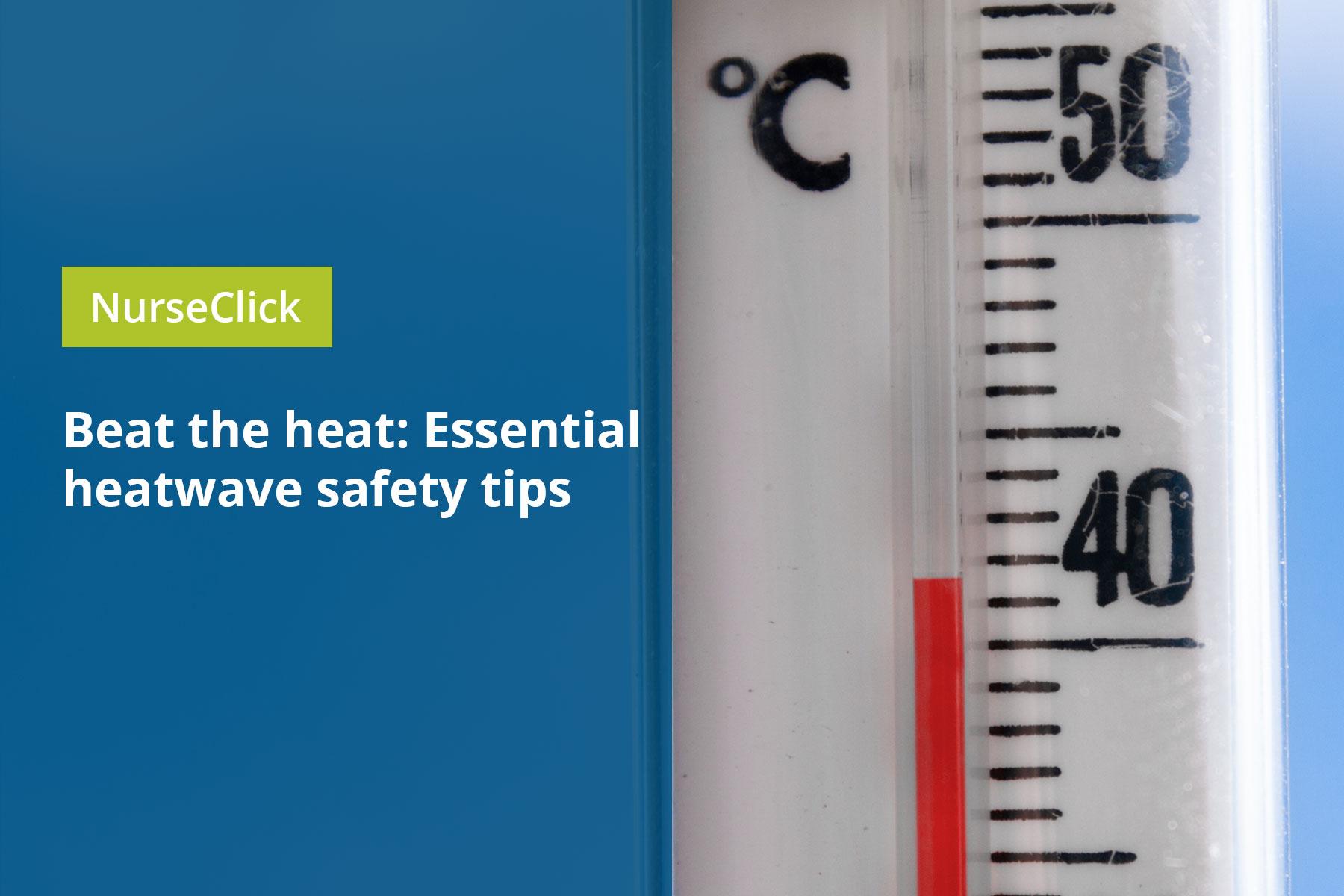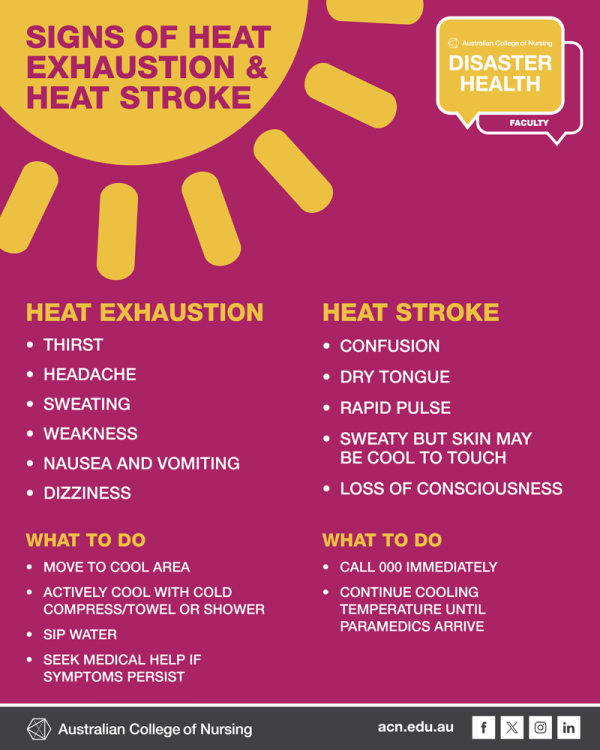Did you know that heatwaves cause more fatalities in Australia than disasters? As temperatures worldwide continue to reach new highs, it’s vital to recognise the serious risks posed by extreme heat. Heatwaves pose a significant threat not only to our physical health but also to our mental wellbeing, underscoring the critical need to adopt strategies to stay cool and safe.
In this article, prepared by the Australian College of Nursing’s (ACN) Disaster Health Faculty, we explore actionable steps to mitigate the dangers of heatwaves, with a focus on preparation and prevention. Whether you’re looking to protect yourself, your loved ones, or your community, these tips and insights will equip you with the knowledge to navigate the sweltering times ahead.
Who is most at risk?
During a heatwave, some people are more at risk than others. These include:
- The elderly
- Young children and babies
- Pregnant people
- People with medical conditions.
Understanding who is at risk can help you or your loved ones take extra precautions when the mercury rises.
General tips for heatwave preparedness
Preparing for a heatwave involves a combination of planning, staying informed, and making simple adjustments to your daily routine.
- Stay connected
Check-in regularly with family and friends, especially those who might be in the high-risk categories. - Keep cool
Close your blinds and utilise fans, air conditioning, and natural ventilation to cool your home. Taking cold showers and wearing light, loose clothing can also help reduce your body temperature. - Limit exposure
Reduce physical activity and stay indoors during the hottest part of the day. If your home isn’t cool, seek out air-conditioned public places like malls, libraries, or cinemas to stay comfortable. - Hydrate
Drink water regularly, even if you do not feel thirsty. Avoid alcohol and caffeine, as they can lead to dehydration. - Remain vigilant
Heat exhaustion can lead to heat stroke if left untreated and can be life-threatening. Ensure you are aware of the signs of heat exhaustion and heatstroke (outlined below). - Seek medical help
If you or someone else shows symptoms, it’s important to act quickly and call 000.
Recognising heat-related illnesses
Understanding the differences between heat exhaustion and heat stroke, as well as the appropriate responses to these conditions, is crucial for prompt and effective treatment.
Heat exhaustion
Symptoms include:
- Thirst
- Headache
- Sweating
- Weakness
- Nausea and vomiting
- Dizziness
If you notice these symptoms, move to a cooler area, sip water, and apply a cold compress.
Heat stroke
Heat stroke is a medical emergency. Symptoms include:
- Confusion
- Dry tongue
- Rapid pulse
- Sweaty skin that may be cool to the touch
- Loss of consciousness
If you suspect heatstroke, call emergency services immediately and actively cool the person until help arrives.
Heatwaves demand our respect and proactive behavior. By following these tips and keeping an eye out for the warning signs of heat-related illnesses, you can ensure you and your loved ones remain safe during the sweltering summer months.
In the event of a disaster, nurses are often at the forefront, either as part of specialised disaster medical assistance teams or as community members providing spontaneous support. The Australian College of Nursing (ACN) Disaster Health Faculty equips nurses with the knowledge and skills to respond to disasters. Members and Fellows of the Faculty have access to a wealth of resources, including the latest news, research, best practices, educational opportunities, and policy developments, ensuring they are prepared to provide the highest standard of care in times of crisis.






